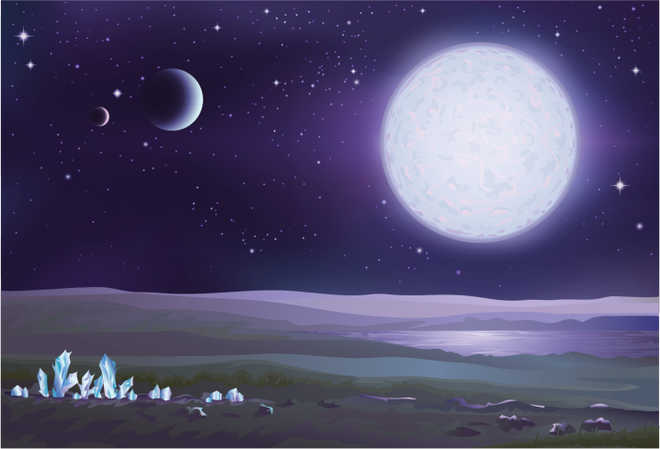
Photo source: Thinkstock
Washington
Digital holograms — 3D images recorded using lasers — may be our best bet for finding alien life, scientists say.
No probe since NASA's Viking program in the late 1970s has explicitly searched for extraterrestrial life. Rather, the focus has been on finding water.
Saturn's icy moon Enceladus has a lot of water, but even if life does exist there in some microbial fashion, the difficulty for scientists on Earth is identifying those microbes from 790 million miles away.
"It's harder to distinguish between a microbe and a speck of dust than you'd think," said Jay Nadeau, research professor at California Institute of Technology in the US.
Enceladus has enormous geysers, venting water vapour through cracks in the moon's icy shell, regularly jet out into space.
When the Saturn probe Cassini flew by Enceladus in 2005, it spotted water vapour plumes in the south polar region blasting icy particles at nearly 2,000 km per hour to an altitude of nearly 500 km above the surface.
Scientists calculated that as much as 250 km of water vapour were released every second in each plume.
Since those first observations, more than a hundred geysers have been spotted.
Water blasting out into space offers a rare opportunity, said Nadeau. While landing on a foreign body is difficult and costly, a cheaper and easier option might be to send a probe to Enceladus and pass it through the jets, where it would collect water samples that could possibly contain microbes.
Some strategies for demonstrating that a microscopic speck is actually a living microbe involve searching for patterns in its structure or studying its specific chemical composition.
"Looking at patterns and chemistry is useful, but I think we need to take a step back and look for more general characteristics of living things, like the presence of motion," he said.
To study the motion of potential microbes from Enceladus's plumes, Nadeau proposed using an instrument called a digital holographic microscope that has been modified specifically for astrobiology.
In digital holographic microscopy, an object is illuminated with a laser and the light that bounces off the object and back to a detector is measured.
This scattered light contains information about the intensity of the scattered light and about its phase - a property that can be used to tell how far the light travelled.
With the two types of information, a computer can reconstruct a 3D image of the object — one that can show motion through all three dimensions.
To study the technology's potential utility for analysing extraterrestrial samples, researchers obtained samples of water from the Arctic, which is sparsely populated with bacteria.
With holographic microscopy, Nadeau was able to identify organisms with population densities of just 1,000 cells per millilitre of volume, similar to what exists in some of the most extreme environments on Earth, such as subglacial lakes.
That low threshold for detection, coupled with the system's ability to test a lot of samples quickly (at a rate of about one millilitre per hour) and its few moving parts, makes it ideal for astrobiology, Nadeau said. PTI



























